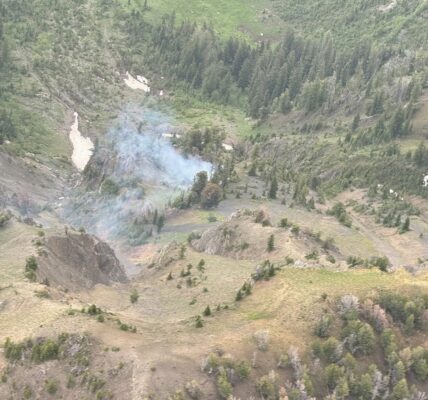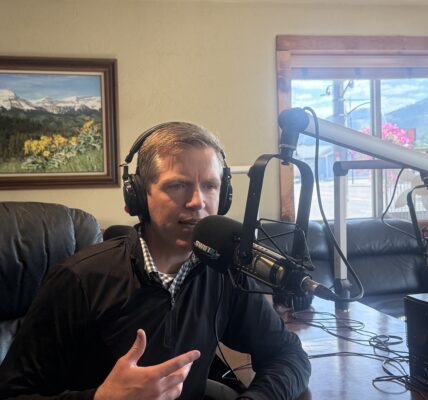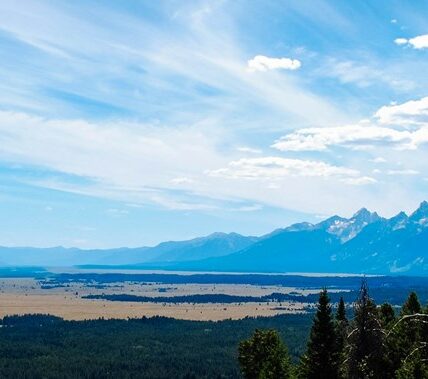
◆ Wyoming book brings the story together.
Released as a service of the Wyoming Press Association
Although World War II had ended in Europe, on Thursday, July 12, 1945, war was still raging in the Pacific. That morning, two events occurred that, 75 years later, still evoke recollections and spark conversations.
At the Los Alamos Scientific Laboratory site near Los Alamos, New Mexico, where the top-secret Manhattan Project was being conducted, General Leslie Groves, sent out a directive notifying his staff that the world’s first test of an atomic bomb would be conducted on the following Monday.
Included in that directive were orders to immediately begin preparations for the test. Those in the know, felt a successful test would give President Harry S. Truman additional negotiating powers in dealing with United Kingdom Prime Minister Winston Churchill at the upcoming Potsdam Conference, but more so, with Communist Party General Secretary Joseph Stalin. Four days later, the first atomic bomb, code named “Trinity,” was successfully conducted.
On that very same morning and at nearly the same time as Gen. Groves’ orders were being carried-out, another group, some 420 air miles northwest of Los Alamos, were being given marching orders by their boss, Frank “Wild Horse” Robbins of Glenrock, Wyoming.

As the morning sun broke over Wyoming’s Red Desert, a fixed wing, single-engine airplane, piloted by Walt Williams of Laramie, Wyoming, was preparing to take-off from a crude, makeshift runway near the Man and Boy Buttes. Williams had received a directive from Robbins to keep an eye out for anything unusual while he was rounding up wild horse herds that morning.
Two of Robbins’ competitors, Jim and Jessie Karstoft of Rawlins, Wyoming, had joined his wrangler’s camp the prior evening and indicated they had been chasing “something special” on horseback for nearly two weeks, but were not having any luck. They were reluctant to give any further details as to their much sought-after prize.
By 8:00 a.m. that morning, scientists in New Mexico were starting to assemble the Trinity and Creutz high-explosive (HE) charges in two separate canyon locations. And, in Wyoming, pilot Walt Williams had located the “unusual” item Robbins was seeking: a golden palomino stallion with his band of some 30 head, including 12 palomino colts.
Using his well-honed flying skills, Williams was able to direct that wild herd back to a box canyon horse trap where they were successfully corralled by Frank Robbins and his ground crew.
Coincidentally, as the palomino stallion and his herd were about to lose their freedom, citizens of southern Wyoming were drinking their morning coffee while reading the latest edition of the Rawlins Republican-Bulletin. The headline on page one of that Thursday edition read, “Rounding Up Wild Horses Is Now Done by Airplane.” The news story recounted Rawlins photographer, Verne Wood’s adventure taking photographs of Robbins’ wild horse roundup on the Red Desert.
The article stated: “On Sunday and Monday of this week, Verne Wood, of the Wood Studio went to the section south of Wamsutter and secured a number of excellent pictures of the roundup. These were taken at the request of Mr. Robbins. Later, it is hoped, pictures may be taken from the airplane.”
Four days after the capture and photographing of the stallion, later named “Desert Dust,” came a life-changing event: the first atomic bomb detonation. By that time Wood had developed the film containing the pictures he took of Frank Robbins’ roundup, one shot in particular made Wood’s heart race. “Dad really liked the picture of Desert Dust climbing a rugged canyon wall,” said Verne’s daughter, Nancy Wood Lawson, “but, mom finally convinced him, the pose of the stallion standing broadside was much better.”
Twenty-twenty hindsight tells us Wood’s wife, Violet, made the right selection, because her choice, the photograph titled Desert Dust, became famous around the world.
Unfortunately for both Wood and Robbins, along with success and fame, came heartbreak when that photograph became the focus of a lifelong feud.
By January 1946, World War II was over and the photograph, Desert Dust, had won a prestigious photo contest [The Denver Post Empire Section Rotogravure Contest]. Verne Wood was receiving such a large number of orders for prints of the picture that he had to hire additional staff. At the same time, Frank Robbins and his horse, Desert Dust, had drawn the attention of Universal Pictures. They signed a contract with Robbins to produce a short-subject film starring Desert Dust titled, Fight of the Wild Stallions, which was nominated for an Academy Award.
In April 1946, a battle for ownership of the Desert Dust photograph and its copyrighted name led to a lawsuit filed in Wyoming’s Second Judicial Court, resulting in one of the most unusual rulings ever handed down.
For the first time, the backstory and history of both, Desert Dust the stallion, and Desert Dust the photograph, are joined together as the subject of one book. Titled, Desert Dust: One Man’s Passion to Uncover the True Story Behind an Iconic American Photograph; and written by two former Wyomingites, Paul W. Papa and R. J. “Gill” Gillilan, the book represents Gill’s 16-year investigation into Desert Dust. Its 458 pages are packed full of photographs and stories that add to the Desert Dust legend and mystique. D Donovan, Senior Reviewer, Midwest Book Review wrote, “A tale of intrigue, jealousy, conflict and personal pride. A riveting true work of American history.”
• About the Authors
PAUL W. PAPA is a full-time writer who was raised in Laramie, but moved to Las Vegas, Nevada after shoveling himself out of one too many six-foot snowdrifts. Never forgetting his Wyoming roots, Paul continues to be fascinated by uncommon events that took place in the Wild West.
A member of the Western Writers of America, he has written several books including, It Happened in Wyoming, Haunted Las Vegas, and, most recently, a crime noir, Maximum Rossi, set in 1950s Las Vegas. A former investigator for a major hotel and casino, Paul uses his background to develop detailed-oriented true stories in a narrative nonfiction style that makes history personal for the reader.
R. J. “GILL” GILLILAN grew up in Carbon County, having lived first at Walcott Junction, then Sinclair and finally Rawlins. After 40 years of living in various Wyoming towns, he moved to Las Vegas and became a City of Las Vegas Business License Division Enforcement Officer.
Trained first at the Wyoming Law Enforcement Academy, Gill obtained advanced investigative training at the Nevada Law Enforcement Academy and was certified as an investigator by the National Council on Licensure, Enforcement and Regulation
For the past seventeen years, he has actively researched Desert Dust’s history. During that time he was able to amass a comprehensive collection of information from regional libraries, archives, and personal interviews. In 2016, Gill donated his investigative works to the University of Wyoming, American Heritage Center, in Laramie.





